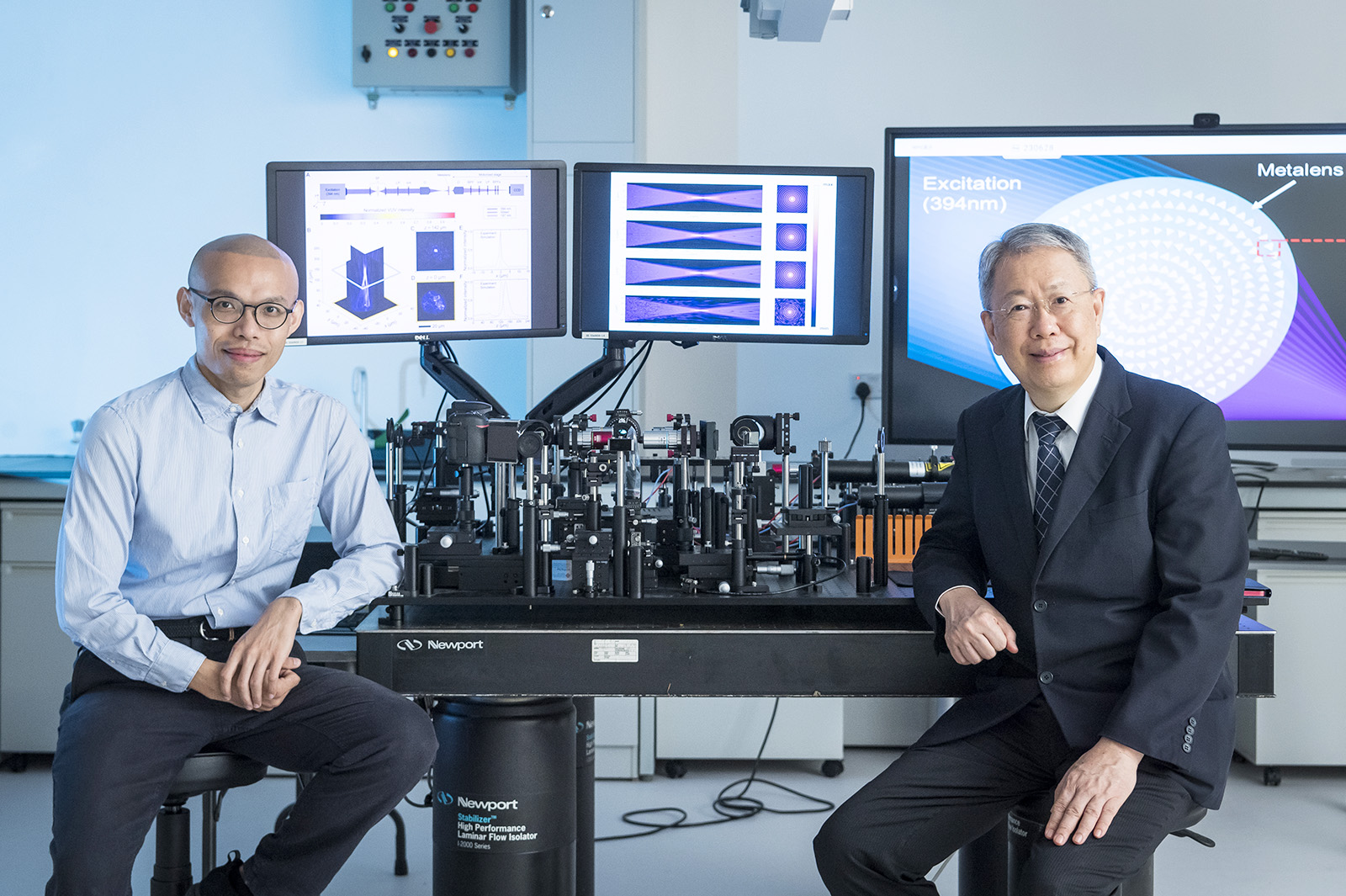A research team co-led by
City University of Hong Kong (CityU) have successfully developed a novel Vacuum Ultra-Violet (VUV) meta-lens which can generate and focus the VUV light, a disruptive technology for the VUV optics market.
VUV is used in semiconductor manufacturing, photochemistry and materials science. The focused VUV light source is strongly needed for the nanolithography, material processing, advanced manufacture, and other industrial areas.
However, it has been costly to work with. VUV with wavelengths between 100 to 200 nanometers (nm), is strongly absorbed by the oxygen in air, and requires a vacuum chamber or other specialised environment. Conventionally, very bulky and expensive system with special and rare nonlinear crystals are used for generating and focusing of VUV light.
In addition, virtually almost all types of glass used for conventional lenses are unsuitable for the VUV due to their strong absorption in this region. The few VUV-transmittable materials currently used for lenses are comparably fragile, placing practical limits on thin lens fabrication and design.
Professor Tsai Din-Ping, Chair Professor of the Department of Electrical Engineering (EE) and Dr Chen Mu-Ku, Research Assistant Professor of EE, have designed and fabricated an array of the 150 nm length triangle shape zinc oxide nano-antenna to form a VUV meta-lens.
“We have developed a meta-lens with intricate nano-structures on zinc oxide thin film. It is capable of converting and focusing VUV light. This meta-lens provides a compact method for nonlinear VUV generation and focusing of the generated light,” said Professor Tsai, one of the corresponding authors of the paper recently published in Science Advances titled “Vacuum ultraviolet nonlinear metalens”.
The new VUV meta-lens in a 45 micro-meter diameter can convert UV light with 394 nm wavelength into VUV light with 197 nm wavelength, and focus the VUV light on a small spot less than 2 millionths of a meter in diameter. Tests at Rice University in the US demonstrating a focused light spot with the enhanced power density by 21 times.
“Our VUV meta-lens is compact, lightweight, effective, and can be mass produced by semiconductor electronics fabrication process. This novel and disruptive meta-device could revolutionise the conventional VUV optics technology and its market,” Professor Tsai said.
The meta-lens allows substantial streamlining of VUV system design and facilitating more advanced applications. This work provides a useful platform for developing low-loss VUV components and increasing the accessibility of the VUV regime.
This research is funded by the Area of Excellence Project (AoE), University Grants Committee/Research Grants Council of Hong Kong SAR government. Professor Tsai is the Project Coordinator of the AoE project “Meta-optics, Meta-acoustics and Meta-devices.”
